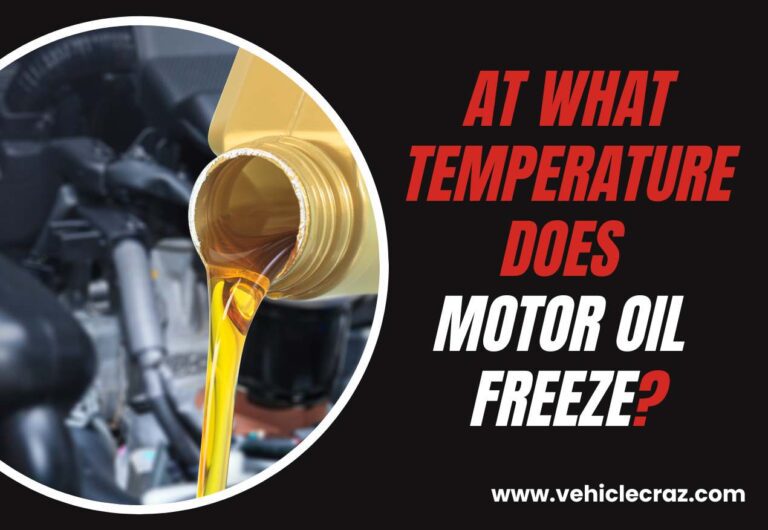Does Coolant Turn Brown? Is It Normal?
Usually, coolants have bright colors such as green, red, or orange. However, in certain situations, you could see a change in color that is significantly different from the original color. So, does coolant turn brown? Yes, it can turn brown due to various factors. We are here to explain everything regarding this. Let’s start.
Does Coolant Turn Brown?
Yes, coolant can turn brown under certain circumstances. The change in color is typically due to contaminants in the coolant. In addition, the same can happen due to the breakdown of the coolant additives.
Rust and dirt can cause coolant to turn brown by contaminating the coolant mixture. Rust forms when metal components corrode, releasing iron oxide into the coolant. These can enter the cooling system, mixing with the coolant and creating a muddy appearance. This change of color indicates underlying issues like corrosion or contamination
In addition, when a vehicle overheats, the coolant can reach temperatures that exceed its normal operating range. This excessive heat can cause the coolant to break down chemically, leading to a change in color.
The high temperatures can also accelerate the oxidation of metal components in the cooling system, such as the radiator or heater core, causing them to release rust particles into the coolant. This combination of chemical breakdown and rust contamination can cause the coolant to turn brown.
Coolant is formulated with additives that help maintain its chemical properties and prevent corrosion within the cooling system. Over time, these additives can degrade, reducing their effectiveness.
As the coolant ages and loses its additives, it becomes less able to protect against rust and corrosion. This can lead to the formation of rust particles in the coolant, which can cause it to turn brown. Additionally, as coolant ages, it may accumulate dirt, debris, and other contaminants, further contributing to its discoloration.
What to Do If Coolant Turned Brown?
Here is what you can do if you notice the coolant has become brown.
Check for Leaks
First, you should inspect the cooling system visually for any signs of leaks, such as wet spots or puddles under the vehicle as well as on engine components. Leaks can lead to coolant loss and contamination, causing the coolant to turn brown. Repair any leaks promptly to prevent further damage.
Flush the Cooling System
Drain the old coolant from the system and flush it thoroughly with water to remove any contaminants, including rust or dirt that may have contributed to the coolant turning brown. Flushing the system helps to ensure that the new coolant remains clean and effective.
Refill with Fresh Coolant
After flushing, refill the cooling system with fresh coolant of the correct type and concentration recommended by the manufacturer. Use a coolant that is compatible with your vehicle’s cooling system to prevent future issues.
Check for Other Issues
As mentioned, brown coolant can indicate underlying issues such as corrosion or overheating. To Figure out this, you should inspect the radiator, hoses, water pump, and other components for signs of damage.
Does Brown Coolant Has Foul Smell?
Brown coolant may have a foul smell, especially if it is contaminated with rust, oil, or other substances. The smell can vary depending on the specific contaminants present in the coolant. Coolant that has been in use for an extended period without being changed may develop a stale or musty odor.
It’s important to note that coolant should not have a sweet smell. A sweet smell can indicate the presence of ethylene glycol, which is toxic. If you detect a sweet smell coming from your coolant, it could indicate a leak in the cooling system that needs to be addressed immediately.
Why My Coolant Turned Brownish After Head Gasket Changed?
After a head gasket replacement, if your coolant has turned brownish, it could be due to residual contaminants, oil contamination, rust, or corrosion. Residual contaminants and oil in the cooling system should be thoroughly flushed out before adding fresh coolant.
If the head gasket failure allowed oil to mix with the coolant, residual oil can continue to contaminate the coolant. Rust or corrosion in the cooling system can also cause the coolant to turn brownish.
Properly bleeding the cooling system after the head gasket replacement can ensure proper coolant flow and prevent overheating. Addressing the underlying cause of the brownish coolant is crucial to prevent further damage to the cooling system and engine.
What Does It Look Like When Coolant Has Rust?
When coolant has rust, it may appear discolored or have a muddy, brownish tint. Rust in coolant is often caused by corrosion of metal components in the cooling system, such as the radiator, heater core, or engine block. As these components corrode, they release iron oxide (rust) into the coolant, causing it to change color.
In addition to a change in color, coolant with rust may also have a cloudy or gritty appearance, indicating the presence of suspended rust particles. It’s important to address rust in coolant promptly, as it can lead to further corrosion of components in the cooling system and potentially cause overheating or other engine issues.
Related


I’m Alex, a seasoned mechanical teacher with over 20 years of hands-on experience in Australia. My passion for all things automotive has driven me to establish this blog, aiming to share my wealth of knowledge and expertise with fellow enthusiasts, DIYers, and anyone keen on understanding the mechanics behind the machines we rely on daily.







